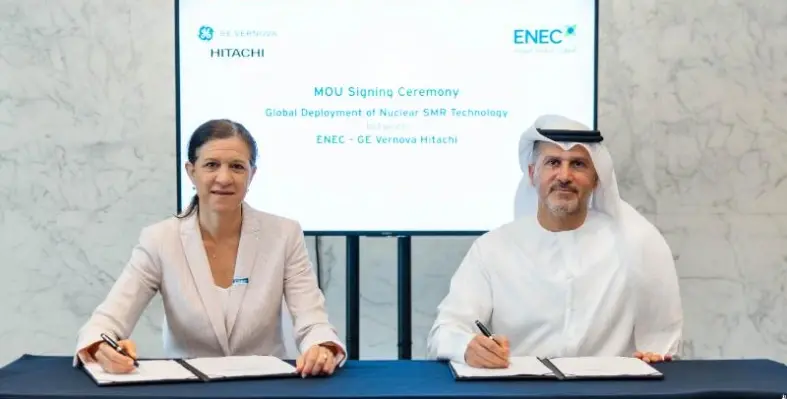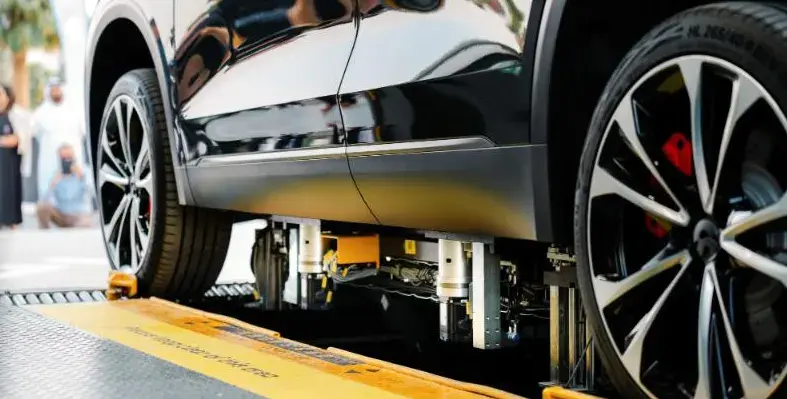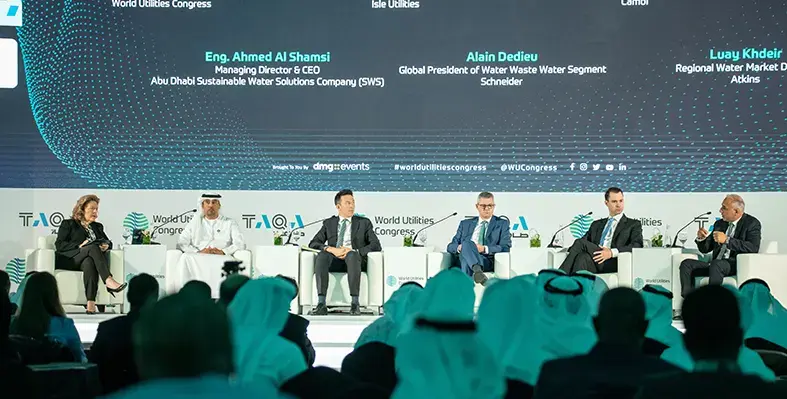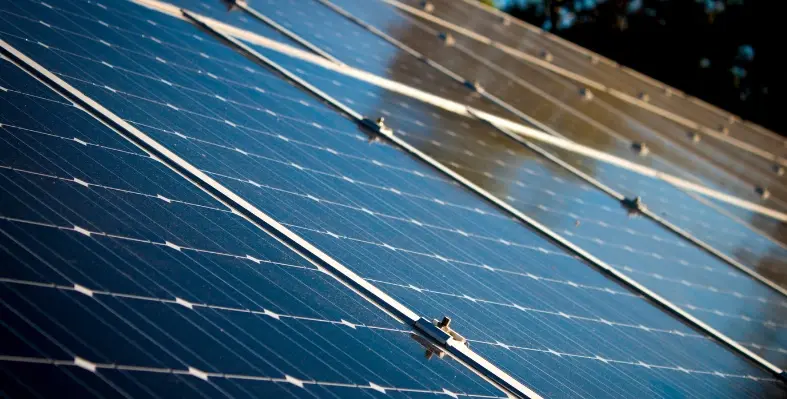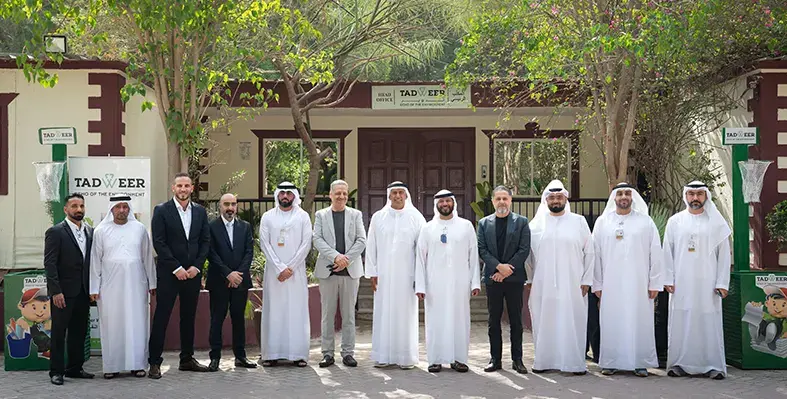The Emirates Nuclear Energy Company (ENEC) has signed an MoU with GE Vernova Hitachi Nuclear Energy (GVH) to jointly evaluate the international deployment of the BWRX-300 small modular reactor (SMR) technology.
The agreement was formalised during a private ceremony at the World Utilities Congress in Abu Dhabi, where ENEC’s managing director and CEO, HE Mohamed Al Hammadi, and Maví Zingoni, CEO of GE Vernova’s Power segment, exchanged signed MoUs.
“As we continue to power the UAE with clean, baseload electricity around the clock, we are glad to move to the next level of cooperation with GE Vernova Hitachi to accelerate the deployment of new advanced nuclear reactor technologies in the UAE and internationally,” said Al Hammadi.
“This MoU will bring together our complementary expertise to identify a clear roadmap for deployment, which is essential to ensure safe, efficient and quality-led nuclear delivery, as we have experienced here in the UAE. As global power demand continues to grow at pace, we look forward to advancing new solutions to meet this growth in a sustainable manner.”
New collaborations
The two companies will collaborate on a development roadmap that includes identifying sites, navigating licensing pathways, outlining investment and commercialisation strategies, and expanding supply chain capabilities.
“Small modular reactors have an essential role to play in an energy secure future and we are pleased to advance our collaboration with ENEC as the UAE seeks to be an early mover for nuclear innovation,” said Zingoni.
“With projects moving forward in Canada and in the United States, collaborating with ENEC further strengthens our ties with the UAE and ability to deliver this technology and achieve a more sustainable energy future.”
ENEC, which successfully developed and operates the four-unit Barakah Nuclear Energy Plant in Abu Dhabi, powers 25% of the UAE with nuclear energy.
The company has been recognised for aligning with international safety and operational standards through its membership in the World Association of Nuclear Operators (WANO) Atlanta Centre.
Each Barakah unit was brought online in an average of just 7.9 years.
The ENEC-GVH teams will now work together to create a detailed roadmap for potential deployment of the BWRX-300, with the ADVANCE programme providing the framework for evaluating next-generation nuclear solutions on a global scale.





